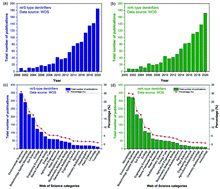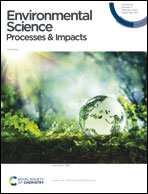A review on nirS-type and nirK-type denitrifiers via a scientometric approach coupled with case studies
Abstract
The denitrification process plays an important role in improving water quality and is a source/sink of nitrous oxide to the atmosphere. The second important rate-limiting step of the denitrification process is catalyzed by two enzymes with different structures and unrelated evolutionary relationships, namely, the Cu-type nitrite reductase encoded by the nirK gene and the cytochrome cd1-type nitrite reductase encoded by the nirS gene. Although some relevant reviews have been published on denitrifiers, most of these reviews do not include statistical analysis, and do not compare the nirS and nirK communities in-depth. However, a systematic study of the nirS-type and nirK-type denitrifying communities and their response to environmental factors in different ecosystems is needed. In this review, a scientometric approach combined with case studies was used to study the nirS-type and nirK-type denitrifiers. The scientometric approach demonstrated that Pseudomonas, Paracoccus, and Thauera are the most frequently mentioned nirS-type denitrifiers, while Pseudomonas and Bradyrhizobium are the top two most frequently mentioned nirK-type denitrifiers. Among various environmental factors, the concentrations of nitrite, nitrate and carbon sources were widely reported factors that can influence the abundance and structure of nirS-type and nirK-type denitrifying communities. Case studies indicated that Bradyrhizobium was the major genus detected by high-throughput sequencing in both nirS and nirK-type denitrifiers in soil systems. nirS-type denitrifiers are more sensitive to the soil type, soil moisture, pH, and rhizosphere effect than nirK. To clarify the relationships between denitrifying communities and environmental factors, the DNA stable isotope probe combined with metagenomic sequencing is needed for new denitrifier detections.

- This article is part of the themed collection: Environmental Science: Processes & Impacts: Recent Review Articles


 Please wait while we load your content...
Please wait while we load your content...